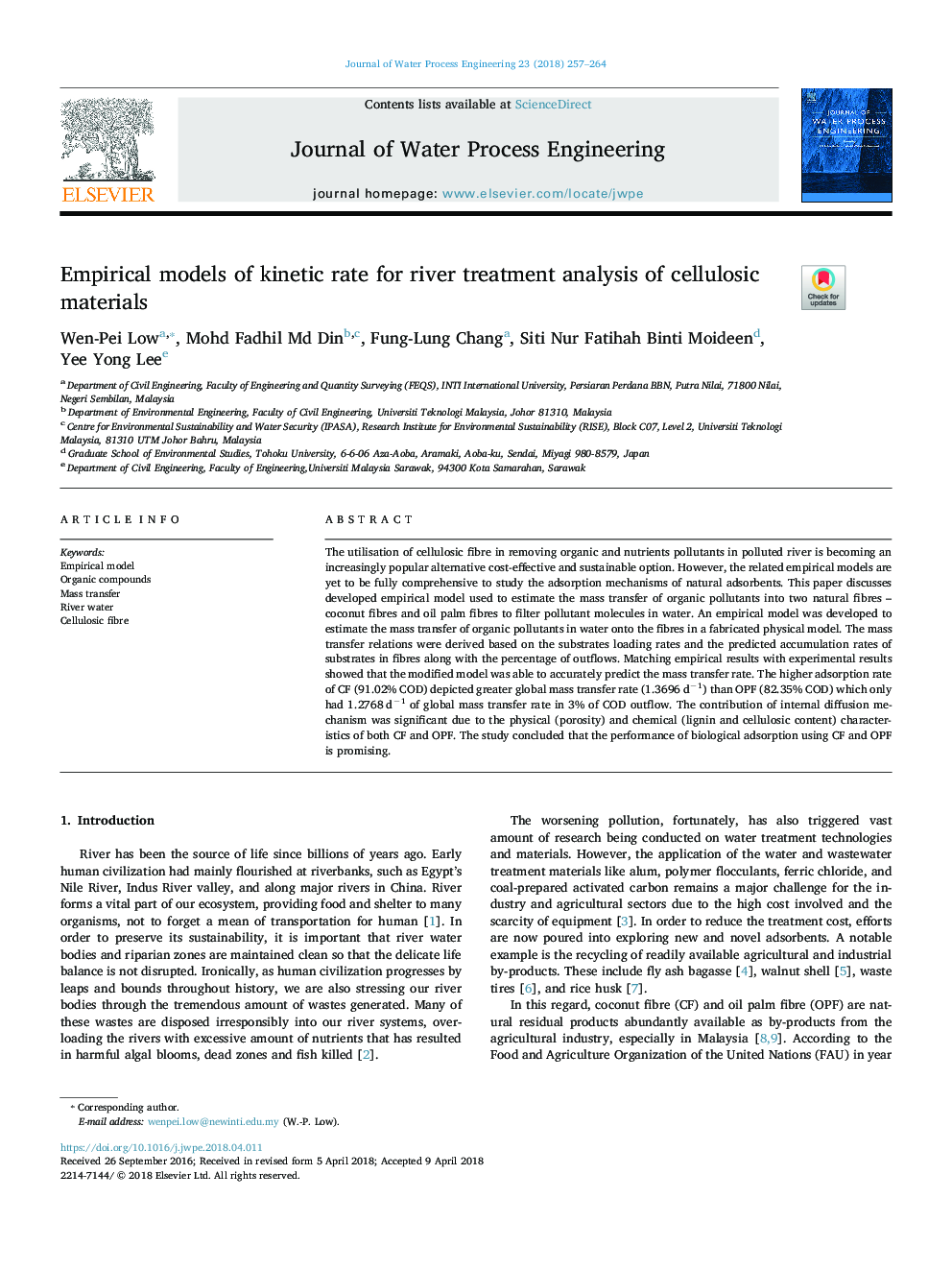| Article ID | Journal | Published Year | Pages | File Type |
|---|---|---|---|---|
| 6671916 | Journal of Water Process Engineering | 2018 | 8 Pages |
Abstract
The utilisation of cellulosic fibre in removing organic and nutrients pollutants in polluted river is becoming an increasingly popular alternative cost-effective and sustainable option. However, the related empirical models are yet to be fully comprehensive to study the adsorption mechanisms of natural adsorbents. This paper discusses developed empirical model used to estimate the mass transfer of organic pollutants into two natural fibres - coconut fibres and oil palm fibres to filter pollutant molecules in water. An empirical model was developed to estimate the mass transfer of organic pollutants in water onto the fibres in a fabricated physical model. The mass transfer relations were derived based on the substrates loading rates and the predicted accumulation rates of substrates in fibres along with the percentage of outflows. Matching empirical results with experimental results showed that the modified model was able to accurately predict the mass transfer rate. The higher adsorption rate of CF (91.02% COD) depicted greater global mass transfer rate (1.3696â¯dâ1) than OPF (82.35% COD) which only had 1.2768â¯dâ1 of global mass transfer rate in 3% of COD outflow. The contribution of internal diffusion mechanism was significant due to the physical (porosity) and chemical (lignin and cellulosic content) characteristics of both CF and OPF. The study concluded that the performance of biological adsorption using CF and OPF is promising.
Related Topics
Physical Sciences and Engineering
Chemical Engineering
Chemical Engineering (General)
Authors
Wen-Pei Low, Mohd Fadhil Md Din, Fung-Lung Chang, Siti Nur Fatihah Binti Moideen, Yee Yong Lee,
